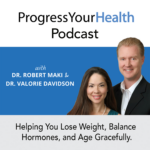
Welcome to the new year, 2018! It is going to be a great year. With the start of any new year, everyone is ready to eat better and lose weight. Since when did my fat jeans’ become my regular jeans lol! With the holiday festivities behind us, it is time to get back on track with our eating and get back into our skinny jeans!
Over the years there have been numerous diet’ programs for weight loss. As many of us know, diets are not sustainable, which is why we might lose 15 lbs but gain it back and more. Or we lose a little weight only to plateau and feel like our efforts are fruitless.
One approach that seems to have spanned the ages is, eat less, exercise more.’ We all have tried it once or many times, even though it always backfires on us. People still keep trying to rein in their calories and exercise like crazy after the new year.
The Ketogenic Diet has been around for decades but is currently trendy for weight loss and overall health. There are many opinions regarding its viability as a dietary strategy. It is a low carbohydrate diet, but there are many more aspects to it. A Ketogenic Diet is much better than just reducing your calories for weight loss.
When we eat carbohydrates, our bodies run by a process called, Glycolysis. This is the process of burning glucose/sugar is our primary fuel source for energy. When we drop our daily carbohydrates intake below 30 grams, our bodies can no longer run in glycolysis.
Instead, your body will switch to ketosis, which is the process of utilizing fat stores to produce ketone bodies as an alternative fuel source. When you are in ketosis, you are burning fat. We have stored glucose in our muscles and liver called glycogen. It takes about 72 hours to deplete the glycogen stores and switch into ketosis.
Your body loves burning fat (ketone bodies) as a fuel source. Ketosis is a great way to encourage your body to burn your fat stores and lose weight. Ketosis is especially good for helping you lose belly fat. Also, ketosis will help to slow the break down your muscle tissue. Many people doing a ketogenic diet will have more energy, clearer thinking and no cravings for sugar and carbs.
As I mentioned, a Ketogenic Diet is a great way to lose weight and that stubborn belly fat. A Ketogenic Diet helps your body stop breaking down your muscle tissue and helps to reduce intense cravings. However, long-term ketosis has some dropbacks.
Long-term ketosis reduces our appetite. Often when you are in chronic ketosis, our calories drop because we are just not hungry. When your calories drop all the above symptoms can occur. Also, the brain fog and lack of energy kicks in. Then your weight loss progress eventually stops.
Long-term ketosis can also reduce thyroid function due to the unintentional drop in caloric intake. Staying in ketosis for longer than a month can start to lower thyroid function and cause some other undesirable hormonal changes. These changes can cause your weight loss to plateau and cravings to increase, leading to the inevitable rebound weight gain.
A Ketogenic Diet is not a low-calorie diet or a high protein diet. High levels of dietary protein can cause your insulin levels to elevate, which causes your blood sugar to bounce around. You can become fatigued, constipated, and your cravings increase. Insulin is the only fat storing hormone in the body. If insulin rises from high intake of protein, you may stop losing weight and might actually gain weight.
A balanced Ketogenic Diet is meant to have moderate amounts of protein, lower carbohydrates, and a higher intake of good fats. The increase in good fats is the counterbalance to lowering daily carbohydrate intake. Without intentionally increasing fat intake, results in a lower caloric intake over time. A point to remember: a low carb diet is good, but a low carb and low-calorie diet is not
Below is an approximate breakdown of daily macronutrients.
We have found that by alternating between a Ketogenic Diet with carbohydrate cycling, eliminates the negative impact of long-term ketosis. By adding in a carb-cycling period to the Ketogenic Diet can increase metabolism, reduce breakdown of muscle and increase energy.
We have also found that by adding intermittent fasting with ketosis and carb-cycling really accelerates fat loss and improves energy. This easily becomes a lifestyle that is healthy and sustainable. You can do this for the rest of your life to lose weight and maintain it.
Here is the best part. We have created a program that combines the three that is simple to follow and all written out for you. The Keto-Carb-Cycling Program (KCCP) is our protocol that combines Intermittent fasting, keto-diet, and carb-cycling. The best part is that it is free! We want to share this with you so everyone can enjoy a healthy lifestyle and healthy weight loss.
Go to our website, progressyourhealth.com
Enter your email to get access to our content library. Not only will you have access to the KCCP, but also other helpful information on balancing your hormones naturally and improving overall health.
It is free to you and feel free to share it with friends and family.
The post Does the Ketogenic Diet Work? | PYHP 028 appeared first on .
Discover the common and unfamiliar symptoms that you might be experiencing. Get access to cases of real women with hormonal conditions.

In this episode, we discuss a question from Janice, a podcast listener’s question regarding the benefits of estrogen therapy for heart health. There is much evidence to show that estrogen has cardiovascular protective benefits. We wanted to discuss how estrogen benefits heart health and can help reduce the risk of cardiovascular disease. Janice’s Question: Are […]
In this episode, we talk about the benefits of estrogen on bones. A listener’s question (Alison) inspired this episode. Alison asked if taking vaginal biest has the same heart and bone effects that other estrogens and estrogen therapies have. So, we wanted to expand on estrogen’s role in helping keep bones strong and healthy. In […]
In this episode, we talk about hormone treatments for perimenopause and menopause. There is a vast distinction between perimenopause and menopause when it comes to treatment options. We often see women who are being treated for menopause when they are genuinely not in menopause. Meet Linda: Linda is a listener who sent us a question […]
Recently, Catherine posted a question on our website about Biest cream, and we knew this could interest our listeners. Biest is a combination of estriol and estradiol, one of the most common forms of estrogen therapy used in bio-identical hormone replacement. There are many doses, ratios, options, and methods of using Biest, so we thought […]
Welcome to the Progress Your Health Podcast! This is a podcast that helps you learn about balancing hormones, especially during perimenopause and menopause. We love hearing from our listeners. If you have a question, please visit our website and click Ask the Doctor a question. Let’s read Brigitte’s question! I have been listening and learning […]
In this episode, we talk about the difference between perimenopause and menopause. Both Dr. Maki and I (Dr. Davidson) have worked with women in perimenopause and menopause since 2004 and sometimes get a bit myopic and technical when it comes to explaining the differences. The other day, a patient of Dr Maki’s asked the question, […]